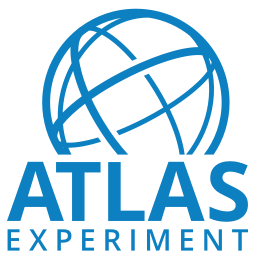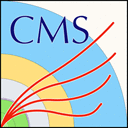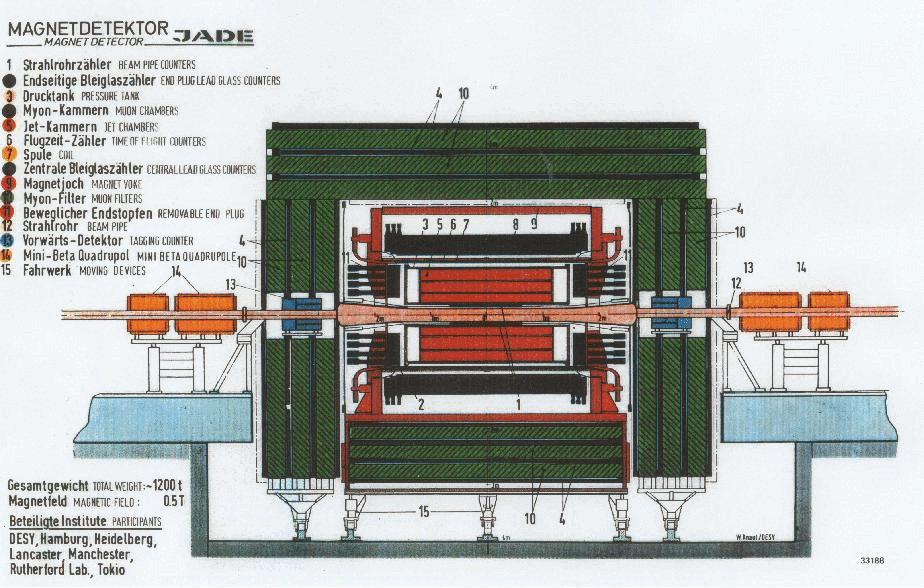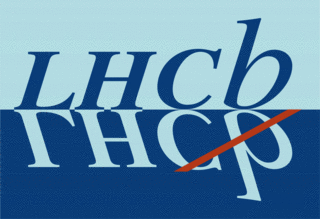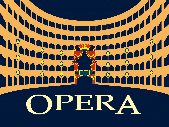ElectronHad primary dataset in AOD format from Run of 2012 (/ElectronHad/Run2012A-22Jan2013-v1/AOD)
/ElectronHad/Run2012A-22Jan2013-v1/AOD, CMS collaboration
Cite as: CMS collaboration (2022). ElectronHad primary dataset in AOD format from Run of 2012 (/ElectronHad/Run2012A-22Jan2013-v1/AOD). CERN Open Data Portal. DOI:10.7483/OPENDATA.CMS.YONC.0ATH
Data recorded in 2012 and published in 2022Dataset Collision CMS 8TeV pp CERN-LHC
Description
ElectronHad primary dataset in AOD format from RunA of 2012. Run period from run number 190456 to 193621.
The list of validated runs, which must be applied to all analyses, can be found in
CMS list of validated runs Cert_190456-208686_8TeV_22Jan2013ReReco_Collisions12_JSON.txt
Dataset characteristics
8873078 events. 655 files. 2.3 TiB in total.System details
FT53_V21A_AN6CMSSW_5_3_32
Recommended container image for analyses is available in the following locations (see guide):
docker.io/cmsopendata/cmssw_5_3_32-slc6_amd64_gcc472:latestgitlab-registry.cern.ch/cms-cloud/cmssw-docker-opendata/cmssw_5_3_32-slc6_amd64_gcc472:latest
How were these data selected?
Events stored in this primary dataset were selected because of the presence of at least one or two isolated high-energy electrons and high missing transverse momentum from jets; or one or two isolated high-energy electrons and a high scalar sum of the jet transverse momenta (HT); or one or two isolated high-energy electrons and loose hyperbolic cut on razor variables, like R2 and MR, defined in terms of the momentum of two megajets; or at least two isolated electrons and two or more jets in the event.
Data taking / HLT
The collision data were assigned to different RAW datasets using the following HLT configuration.
Data processing / RECO
This primary AOD dataset was processed from the RAW dataset by the following step:
Step: RECO
Release: CMSSW_5_3_7_patch5
Global tag: FT_R_53_V18::All
Configuration file for RECO step reco_2012A_ElectronHad
HLT trigger paths
The possible HLT trigger paths in this dataset are:
HLT_CleanPFHT300_Ele15_CaloIdT_CaloIsoVL_TrkIdT_TrkIsoVL_PFMET45
HLT_CleanPFHT300_Ele15_CaloIdT_CaloIsoVL_TrkIdT_TrkIsoVL_PFMET50
HLT_CleanPFHT300_Ele40_CaloIdVT_TrkIdT
HLT_CleanPFHT300_Ele60_CaloIdVT_TrkIdT
HLT_CleanPFHT350_Ele5_CaloIdT_CaloIsoVL_TrkIdT_TrkIsoVL_PFMET45
HLT_CleanPFHT350_Ele5_CaloIdT_CaloIsoVL_TrkIdT_TrkIsoVL_PFMET50
HLT_CleanPFNoPUHT300_Ele15_CaloIdT_CaloIsoVL_TrkIdT_TrkIsoVL_PFMET45
HLT_CleanPFNoPUHT300_Ele15_CaloIdT_CaloIsoVL_TrkIdT_TrkIsoVL_PFMET50
HLT_CleanPFNoPUHT300_Ele40_CaloIdVT_TrkIdT
HLT_CleanPFNoPUHT300_Ele60_CaloIdVT_TrkIdT
HLT_CleanPFNoPUHT350_Ele5_CaloIdT_CaloIsoVL_TrkIdT_TrkIsoVL_PFMET45
HLT_CleanPFNoPUHT350_Ele5_CaloIdT_CaloIsoVL_TrkIdT_TrkIsoVL_PFMET50
HLT_DoubleEle14_CaloIdT_TrkIdVL_Mass8_PFMET40
HLT_DoubleEle14_CaloIdT_TrkIdVL_Mass8_PFMET50
HLT_DoubleEle8_CaloIdT_TrkIdVL
HLT_DoubleEle8_CaloIdT_TrkIdVL_Mass8_PFHT175
HLT_DoubleEle8_CaloIdT_TrkIdVL_Mass8_PFHT225
HLT_DoubleEle8_CaloIdT_TrkIdVL_Mass8_PFNoPUHT175
HLT_DoubleEle8_CaloIdT_TrkIdVL_Mass8_PFNoPUHT225
HLT_Ele12_CaloIdL_CaloIsoVL_TrkIdVL_TrkIsoVL_DoubleCentralJet65
HLT_Ele12_CaloIdL_CaloIsoVL_TrkIdVL_TrkIsoVL_RsqMR30_Rsq0p04_MR200
HLT_Ele12_CaloIdL_CaloIsoVL_TrkIdVL_TrkIsoVL_RsqMR40_Rsq0p04_MR200
HLT_Ele12_CaloIdL_CaloIsoVL_TrkIdVL_TrkIsoVL_RsqMR45_Rsq0p04_MR200
HLT_Ele12_CaloIdT_CaloIsoVL_TrkIdVL_TrkIsoVL_DoubleCentralJet65
HLT_Ele12_CaloIdT_CaloIsoVL_TrkIdVL_TrkIsoVL_RsqMR30_Rsq0p04_MR200
HLT_Ele12_CaloIdT_CaloIsoVL_TrkIdVL_TrkIsoVL_RsqMR40_Rsq0p04_MR200
HLT_Ele25_CaloIdVT_CaloIsoT_TrkIdT_TrkIsoT_CentralPFJet30
HLT_Ele25_CaloIdVT_CaloIsoT_TrkIdT_TrkIsoT_CentralPFJet30_BTagIPIter
HLT_Ele25_CaloIdVT_CaloIsoT_TrkIdT_TrkIsoT_CentralPFNoPUJet30
HLT_Ele25_CaloIdVT_CaloIsoT_TrkIdT_TrkIsoT_CentralPFNoPUJet30_BTagIPIter
HLT_Ele25_CaloIdVT_CaloIsoT_TrkIdT_TrkIsoT_DiCentralPFJet30
HLT_Ele25_CaloIdVT_CaloIsoT_TrkIdT_TrkIsoT_DiCentralPFNoPUJet30
HLT_Ele25_CaloIdVT_CaloIsoT_TrkIdT_TrkIsoT_TriCentralPFJet30
HLT_Ele25_CaloIdVT_CaloIsoT_TrkIdT_TrkIsoT_TriCentralPFJet50_40_30
HLT_Ele25_CaloIdVT_CaloIsoT_TrkIdT_TrkIsoT_TriCentralPFNoPUJet30
HLT_Ele25_CaloIdVT_CaloIsoT_TrkIdT_TrkIsoT_TriCentralPFNoPUJet50_40_30
HLT_Ele25_CaloIdVT_TrkIdT_TriCentralPFJet30
HLT_Ele25_CaloIdVT_TrkIdT_TriCentralPFJet50_40_30
HLT_Ele25_CaloIdVT_TrkIdT_TriCentralPFNoPUJet30
HLT_Ele25_CaloIdVT_TrkIdT_TriCentralPFNoPUJet50_40_30
HLT_Ele27_WP80_CentralPFJet30_CentralPFJet25
HLT_Ele27_WP80_CentralPFJet30_CentralPFJet25_PFMET20
HLT_Ele27_WP80_CentralPFJet80
HLT_Ele27_WP80_PFJet30_PFJet25_Deta3
HLT_Ele27_WP80_WCandPt80
HLT_Ele30_CaloIdVT_TrkIdT_PFJet100_PFJet25
HLT_Ele30_CaloIdVT_TrkIdT_PFJet150_PFJet25
HLT_Ele30_CaloIdVT_TrkIdT_PFNoPUJet100_PFNoPUJet25
HLT_Ele30_CaloIdVT_TrkIdT_PFNoPUJet150_PFNoPUJet25
HLT_Ele8_CaloIdT_TrkIdT_DiJet30
HLT_Ele8_CaloIdT_TrkIdT_QuadJet30
HLT_Ele8_CaloIdT_TrkIdT_TriJet30
HLT_Ele8_CaloIdT_TrkIdVL_Jet30
HLT_HT650_Track50_dEdx3p6
HLT_HT650_Track60_dEdx3p7
HLT_MET80
HLT_MET80_Track50_dEdx3p6
HLT_MET80_Track60_dEdx3p7
How were these data validated?
During data taking all the runs recorded by CMS are certified as good for physics analysis if all subdetectors, trigger, lumi and physics objects (tracking, electron, muon, photon, jet and MET) show the expected performance. Certification is based first on the offline shifters evaluation and later on the feedback provided by detector and Physics Object Group experts. Based on the above information, which is stored in a specific database called Run Registry, the Data Quality Monitoring group verifies the consistency of the certification and prepares a json file of certified runs to be used for physics analysis. For each reprocessing of the raw data, the above mentioned steps are repeated. For more information see:
CMS data quality monitoring: Systems and experiences
The CMS Data Quality Monitoring software experience and future improvements
The CMS data quality monitoring software: experience and future prospects
How can you use these data?
You can access these data through the CMS Open Data container or the CMS Virtual Machine. See the instructions for setting up one of the two alternative environments and getting started in
Running CMS analysis code using Docker
Files and indexes
Disclaimer
These open data are released under the Creative Commons Zero v1.0 Universal license.
Neither the experiment(s) ( CMS ) nor CERN endorse any works, scientific or otherwise, produced using these data.
This release has a unique DOI that you are requested to cite in any applications or publications.

